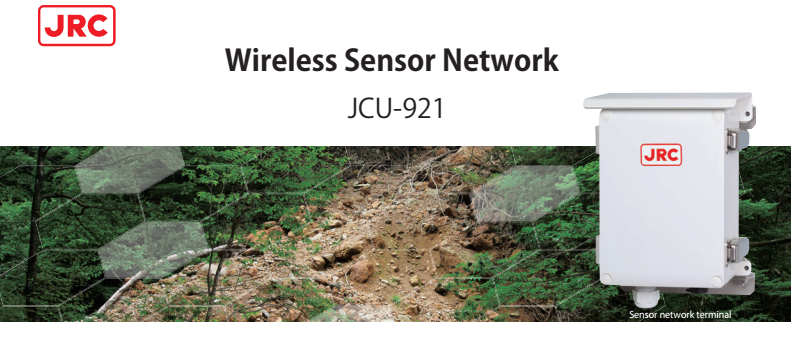The main cause for landslides are heavy rains, but earthquakes and vulcanic activity are also possible causes. The natural factors that determine the possibility of a landslide are the surface's slope, type of soil and the vegetation. Around urban areas many hillsides have had their vegetation removed and have been irregularly occupied. The increase of the weight on the soil by constructions in the area and the removal of vegetation greatly increase the chance of a landslide in case of heavy rain.
The JCU-921 is a solution for landslide detection. Each unit of the JCU-921 monitors the area around it, analysing vibrations and reporting unusual activity.
When multiple JCU-921 are installed, a network between them is created. This guarantees maximum coverage and reliability when transmiting data. Other than that, the system contains many important features, such as rugged enclosure, independence (internal battery) low cost, wireless communication, and so on.
Features
- Ad-hoc multi-hop communications network
The multiple JCU-921 installed form an Ad-hoc multi-hop network. This system allows multi-point observation of debris and mud flows.
If the terminal buried under debris fails operate on a communications route, its ad-hoc function allows automatic switchover to a new communications route.
- Low system cost
The terminal requires no wire reconnection unlike the conventional wire-type sensors, allowing continuous detection of subsequent debris flows. The internal battery supplies energy to the system and data is transmitted wirelessly.
- Independent and rugged
The terminal is designed to be driven by a battery and to provide radio communications, so that it is not affected by a power failure and wire breaks, allowing a landslide monitoring system to be built with high immunity from disasters.
- Low power consumption
The sensor network terminal is designed to operate on the 920MHz band that has little interference even in city areas and to provide a low current drain, ensuring the service life of one to 5 years with an internal lithium battery. 920 MHz, que possui baixa interferência em regiões urbanas. Além disso seu sistema de transmissão consome baixa potência nessa faixa de frequência, e portanto, garante operação contínua do equipamento por 5 anos antes que seja necessária troca da bateria.


